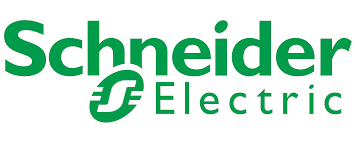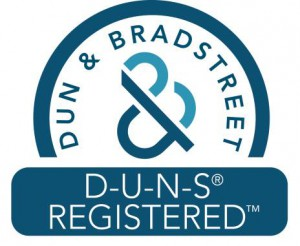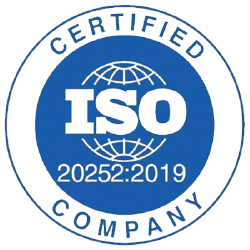تم تحديث الصفحة :
Jul 2025
مقدمة عن السوق يمكن تعريف السياج الجغرافي على أنه حدود افتراضية في المنطقة الجغرافية بمعنى RFID وGPS، مما يؤدي إلى قيام البرنامج بتنشيط الاستجابة عندما يغادر جهاز محمول المنطقة أو يدخلها. لسنوات عديدة، استفاد المطورون من مساعدة الأجهزة والبرامج لتحديد موقع البيانات الجغرافية بدقة. ديناميكيات السوق من المتوقع أن يؤدي تزايد التطبيقات في قطاعات معينة مثل الموارد البشرية وتكنولوجيا المعلومات وخدمات تتبع الأطفال إلى تعزيز نمو السوق في الفترة القادمة. من المتوقع أن تؤدي سهولة الوصول للمطورين منخفضي التكلفة إلى جانب زيادة الطلب على IOT (إنترنت الأشياء) على وجه التحديد إلى إزالة حواجز التطبيقات المستندة إلى الموقع وإنشاء فرص جديدة للتطورات الجديدة. يعد هذا أيضًا عاملاً حاسماً قائمًا على التنمية ومسؤولًا عن نمو سوق السياج الجغرافي. بالإضافة إلى ذلك، فإن المطورين الذين يركزون بشكل أكبر على التقنيات الجديدة والمتقدمة يساعدون السوق على اكتساب الزخم. عوامل مثل المخاوف التكنولوجية المتعلقة بتطوير أنظمة المراقبة، وقضايا استنزاف البطارية، ونقص خدمات التنبيه المسبق تحد من نمو السوق إلى حد ما. وبالمثل، فإن الافتقار إلى ميزات مثل القدرة على مراقبة السياج الجغرافي في مناطق التغطية المنخفضة أجبر العملاء على تحويل تركيزهم إلى التسويق المعتمد، والذي يعتبر عاملاً مثبطًا لنمو سوق السياج الجغرافي. نطاق السوق يعد تحليل سوق برمجيات السياج الجغرافي العالمي حتى عام 2031 دراسة متخصصة ومتعمقة لسوق برمجيات السياج الجغرافي مع التركيز بشكل خاص على تحليل اتجاهات السوق العالمية. ويهدف التقرير إلى تقديم لمحة عامة عن سوق برمجيات تحديد الموقع الجغرافي مع تجزئة السوق التفصيلية حسب النوع والتطبيق. من المتوقع أن يشهد سوق برمجيات تحديد الموقع الجغرافي العالمي نموًا مرتفعًا خلال الفترة المتوقعة. يقدم التقرير إحصائيات أساسية عن حالة السوق للشركة الرائدة في سوق برمجيات تحديد الموقع الجغرافي ويوفر الاتجاهات والفرص الرئيسية في سوق برمجيات تحديد الموقع الجغرافي. تجزئة السوق يتم تقسيم سوق برمجيات تحديد الموقع الجغرافي العالمي بناءً على النوع والتطبيق. بناءً على النوع، يتم تقسيم السوق إلى تطبيقات الهاتف المحمول المستندة إلى الويب. على أساس التطبيق، يتم تقسيم السوق إلى فرق التسويق، وصناعة السياحة، والموارد البشرية، وبناء المناطق. الإطار الإقليمي ويقدم التقرير لمحة مفصلة عن الصناعة، بما في ذلك المعلومات النوعية والكمية. ويقدم لمحة عامة وتوقعات لسوق برمجيات تحديد المواقع الجغرافية العالمية بناءً على القطاعات المختلفة. كما يوفر حجم السوق والتقديرات المتوقعة للأعوام من 2021 إلى 2031 فيما يتعلق بخمس مناطق رئيسية وهي: أمريكا الشمالية وأوروبا وآسيا والمحيط الهادئ (APAC) والشرق الأوسط وأفريقيا (MEA) وأمريكا الجنوبية. يتم تقسيم سوق برمجيات تحديد المواقع الجغرافية حسب المنطقة لاحقًا إلى بلدان وقطاعات. ويتضمن التقرير تحليلات وتوقعات لـ 18 دولة حول العالم، بالإضافة إلى الاتجاهات والفرص الحالية في المنطقة. يحلل التقرير العوامل التي تؤثر على سوق برمجيات تحديد الموقع الجغرافي من جانب الطلب والعرض ويقيم كذلك ديناميكيات السوق التي تؤثر على السوق خلال الفترة المتوقعة، أي السائقين والقيود والفرص والاتجاهات المستقبلية. يقدم التقرير أيضًا تحليلاً شاملاً للآفات لجميع المناطق الخمس وهي: أمريكا الشمالية وأوروبا وآسيا والمحيط الهادئ والشرق الأوسط وأفريقيا وأمريكا الجنوبية بعد تقييم العوامل السياسية والاقتصادية والاجتماعية والتكنولوجية التي تؤثر على سوق برمجيات تحديد المواقع الجغرافية في هذه المناطق. المشاركون في السوق تغطي التقارير التطورات الرئيسية في استراتيجيات النمو العضوية وغير العضوية لسوق برمجيات تحديد المواقع الجغرافية. تركز العديد من الشركات على استراتيجيات النمو العضوي مثل إطلاق المنتجات والموافقات على المنتجات وغيرها مثل براءات الاختراع والأحداث. وشملت استراتيجيات النمو غير العضوي التي لوحظت في السوق عمليات الاستحواذ والشراكات والتعاون. وقد مهدت هذه الأنشطة الطريق لتوسيع أعمال المشاركين في السوق وقاعدة العملاء. نظرًا للطلب المتزايد على سوق برمجيات السياج الجغرافي، من المتوقع أن يوفر المشاركون في السوق في سوق برمجيات السياج الجغرافي فرص نمو مربحة في المستقبل. فيما يلي قائمة ببعض الشركات العاملة في سوق برمجيات تحديد الموقع الجغرافي. يتضمن التقرير أيضًا ملفات تعريفية للشركات الرئيسية في سوق برمجيات تحديد الموقع الجغرافي إلى جانب تحليل SWOT واستراتيجيات السوق. بالإضافة إلى ذلك، يركز التقرير على اللاعبين الرائدين في الصناعة بمعلومات مثل ملفات تعريف الشركة والمكونات والخدمات المقدمة والمعلومات المالية للسنوات الثلاث الماضية والتطورات الرئيسية في السنوات الخمس الماضية. - Bluedot Innovation - Esri - Foursquare - Bleesk - Bubbl - Factual - هنا - Mobstac - OptiSol Business Solutions - يتكون فريق البحث والتحليل المخصص التابع لـ Radar Labs Insight Partner من محترفين ذوي خبرة يتمتعون بخبرة إحصائية متقدمة ويقدم خيارات تخصيص متنوعة في الدراسة الحالية.
- التحليل التاريخي (سنتان)، سنة الأساس، التوقعات (7 سنوات) مع معدل النمو السنوي المركب
- تحليل PEST و SWOT
- حجم السوق والقيمة / الحجم - عالمي، إقليمي، بلد
- الصناعة والمنافسة
- مجموعة بيانات إكسل
التقارير الحديثة
تقارير ذات صلة
سوق البرمجيات الصناعية
سوق برمجيات تطوير الألعاب
سوق برامج مخطط جانت
سوق برمجيات المناولة الأرضية
سوق برامج G Suite للأعمال
سوق برامج خدمة المساعدة والتذاكر
سوق برمجيات نقاط البيع للضيافة
سوق برمجيات ركوب الدراجات في الأماكن المغلقة
سوق برامج إدارة المحتوى بدون رأس
سوق برمجيات دور الجنازات
سوق برمجيات تصنيع الأثاث
سوق برمجيات الرعاية الصحية كخدمة
سوق برمجيات صناديق التحوط
سوق برامج الخرائط الحرارية
سوق برمجيات شراء الشحنات
سوق برمجيات الجيولوجيا والزلازل
سوق برمجيات التدفئة والتهوية وتكييف الهواء
سوق برامج النمذجة الهيدروليكية
سوق برامج المراسلة للضيوف
سوق برامج فحص المنازل
شهادات العملاء
سبب الشراء
- اتخاذ قرارات مدروسة
- فهم ديناميكيات السوق
- تحليل المنافسة
- رؤى العملاء
- توقعات السوق
- تخفيف المخاطر
- التخطيط الاستراتيجي
- مبررات الاستثمار
- تحديد الأسواق الناشئة
- تحسين استراتيجيات التسويق
- تعزيز الكفاءة التشغيلية
- مواكبة التوجهات التنظيمية
عملاؤنا






























دعم المبيعات
US: +1-646-491-9876
UK: +44-20-8125-4005
Email: sales@theinsightpartners.com
تواصل معنا

87-673-9708

ISO 9001:2015





 احصل على عينة مجانية ل - سوق برامج تحديد المواقع الجغرافية
احصل على عينة مجانية ل - سوق برامج تحديد المواقع الجغرافية